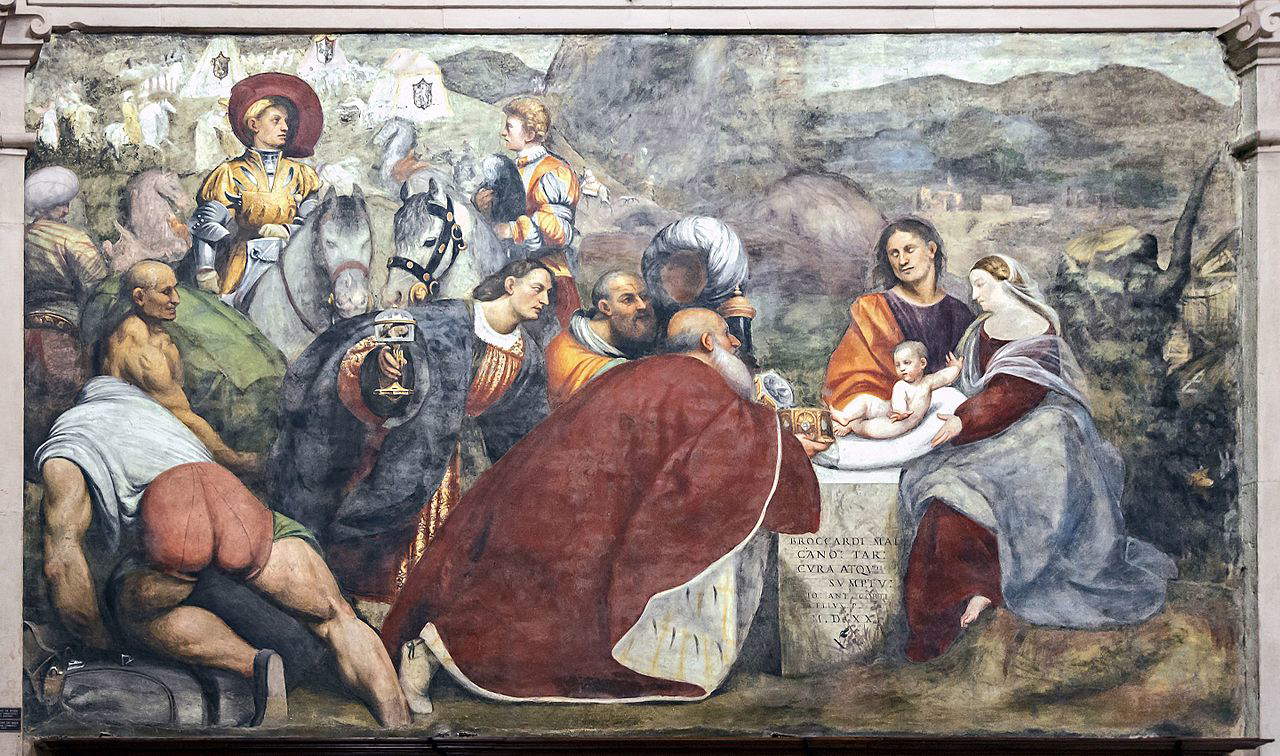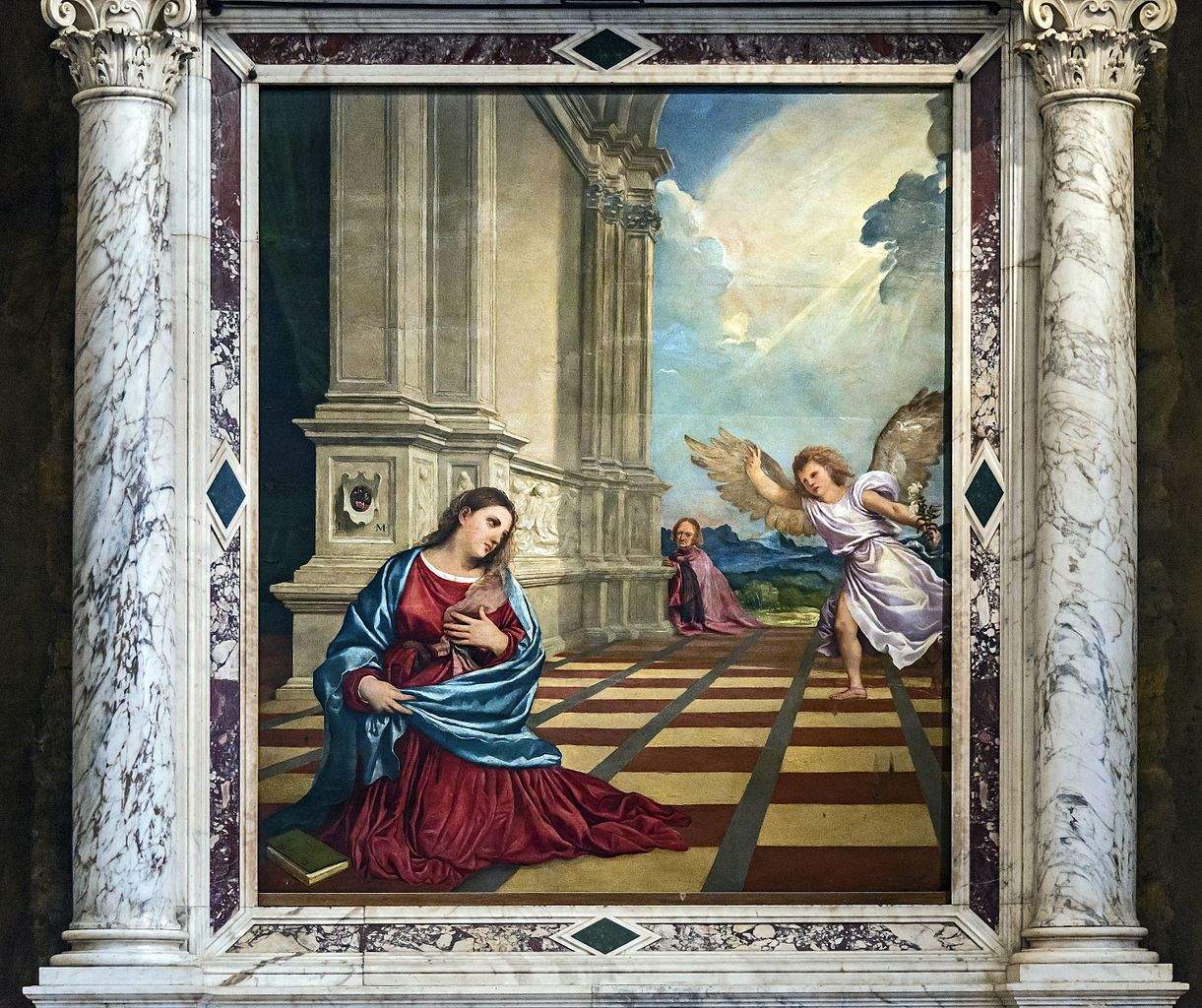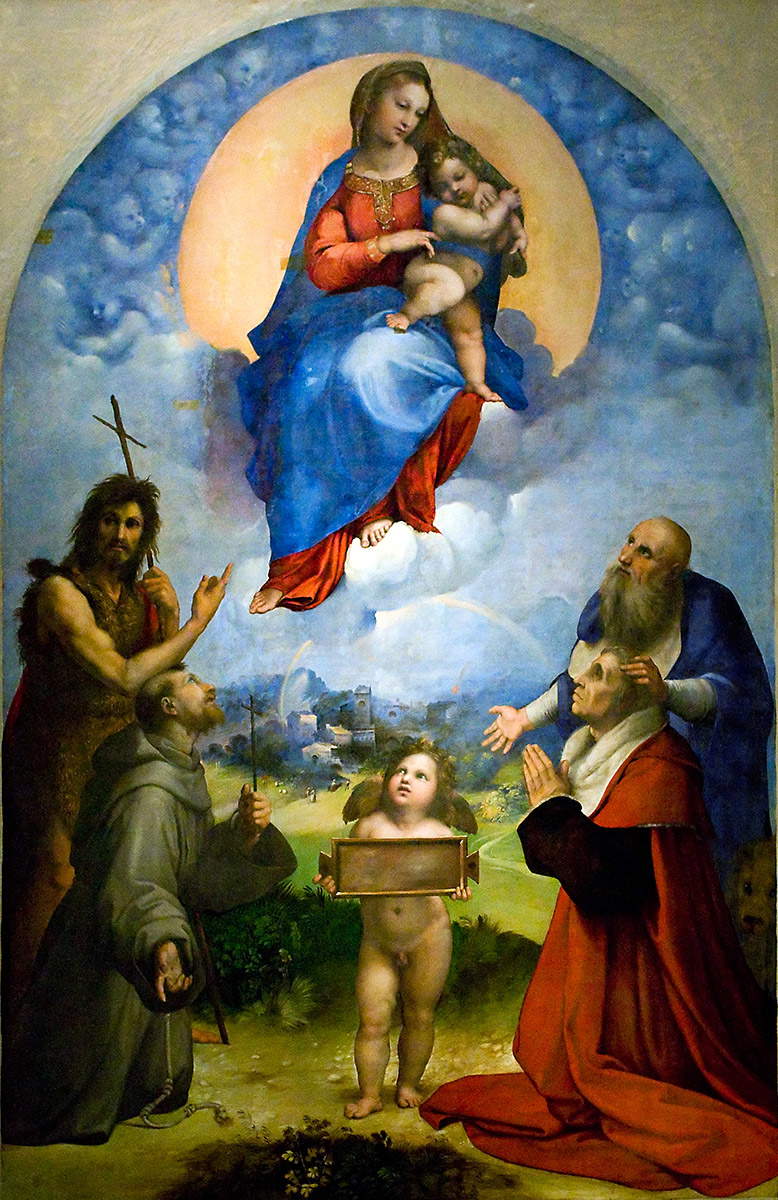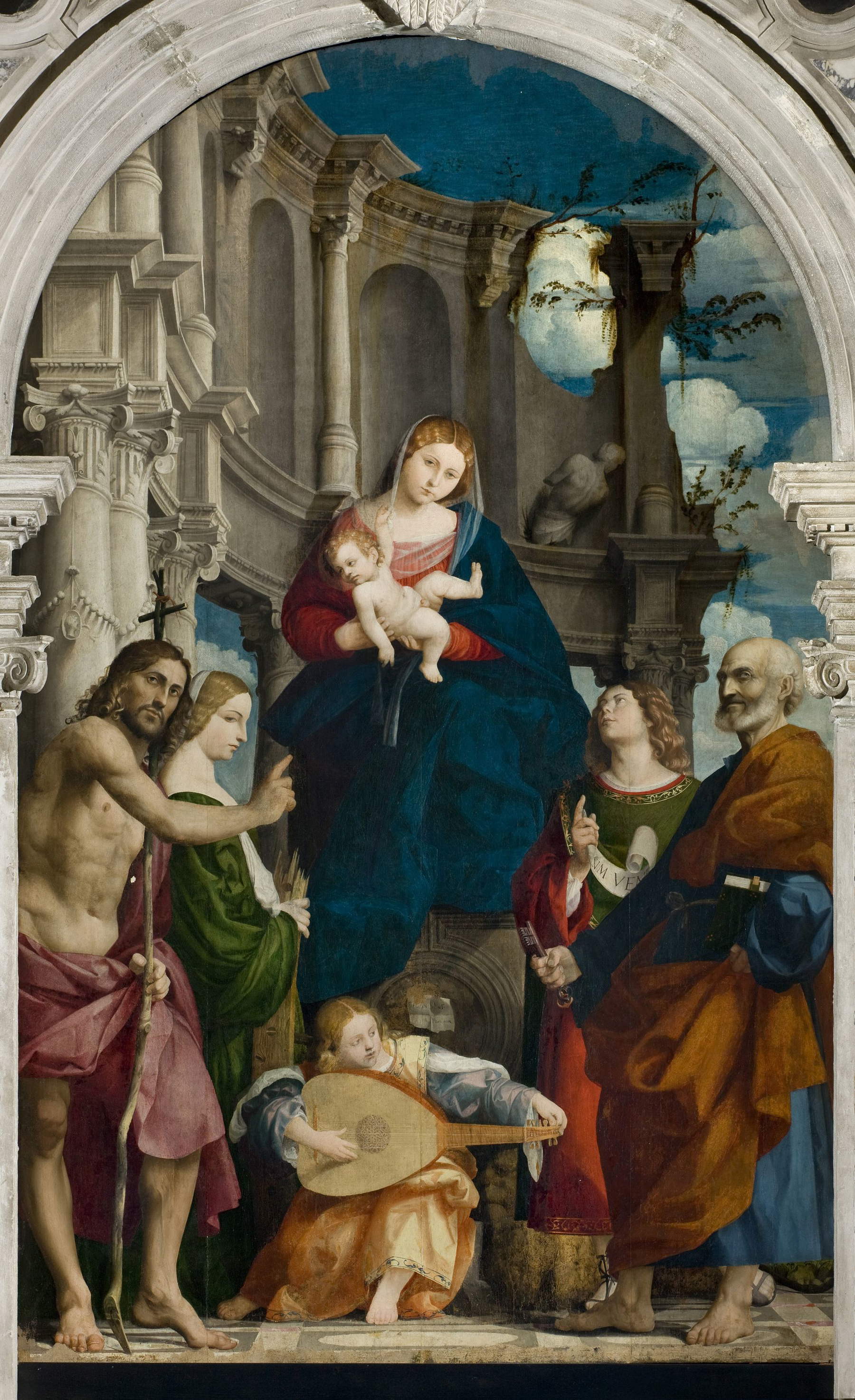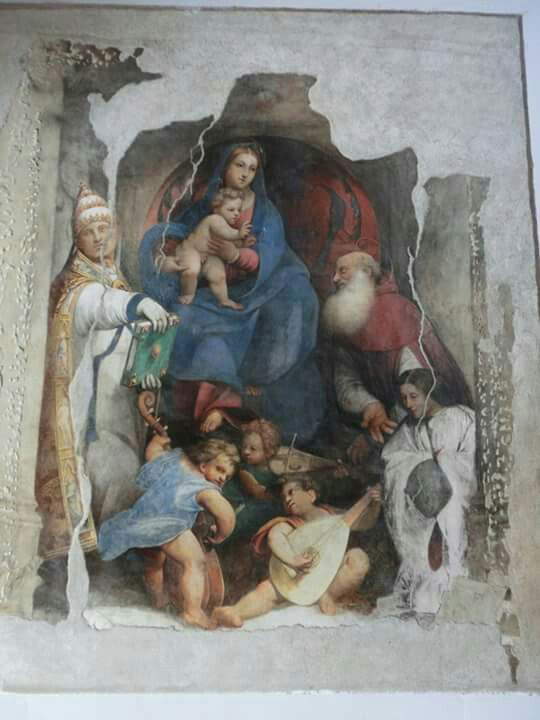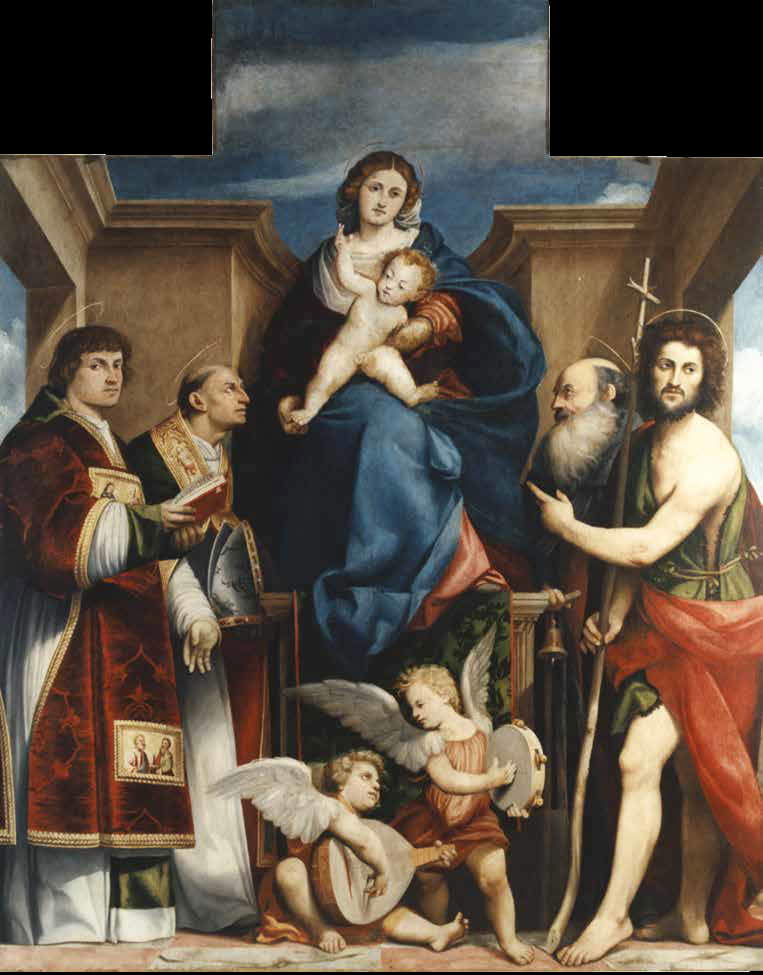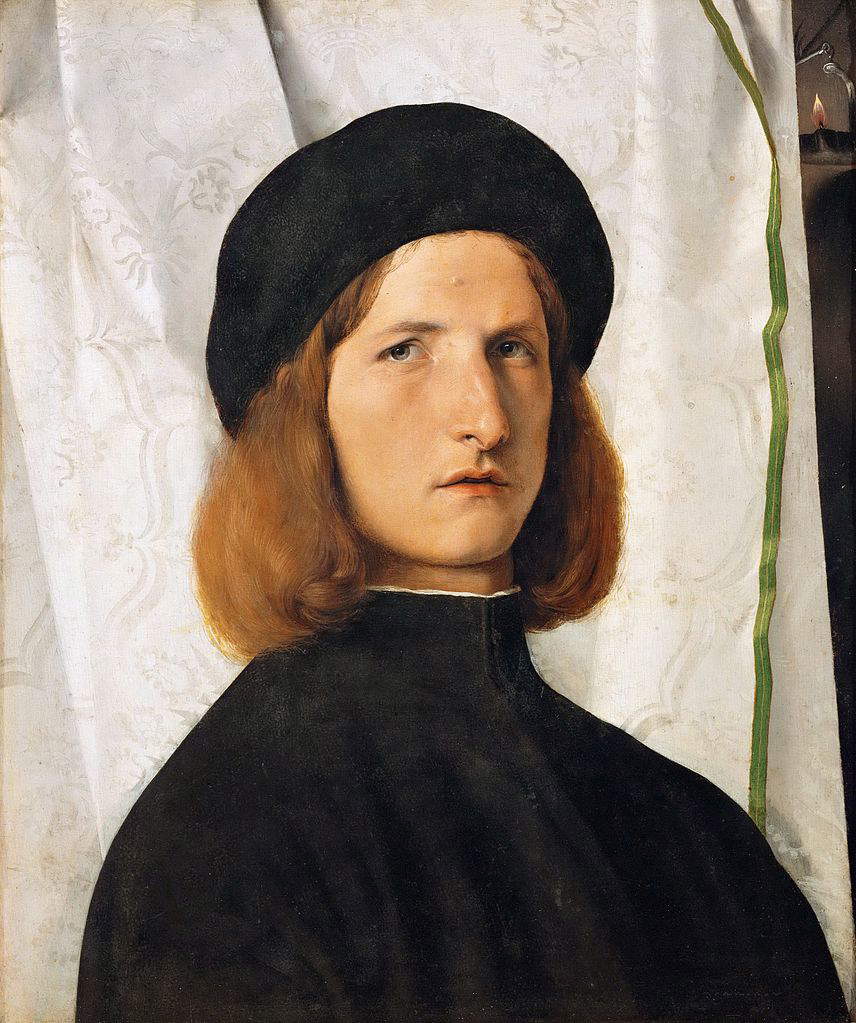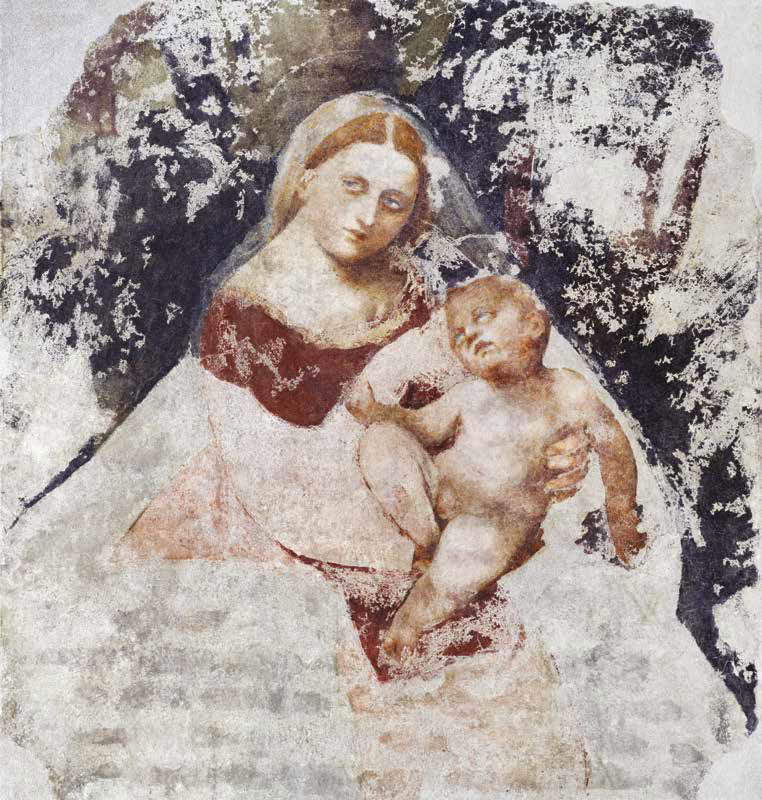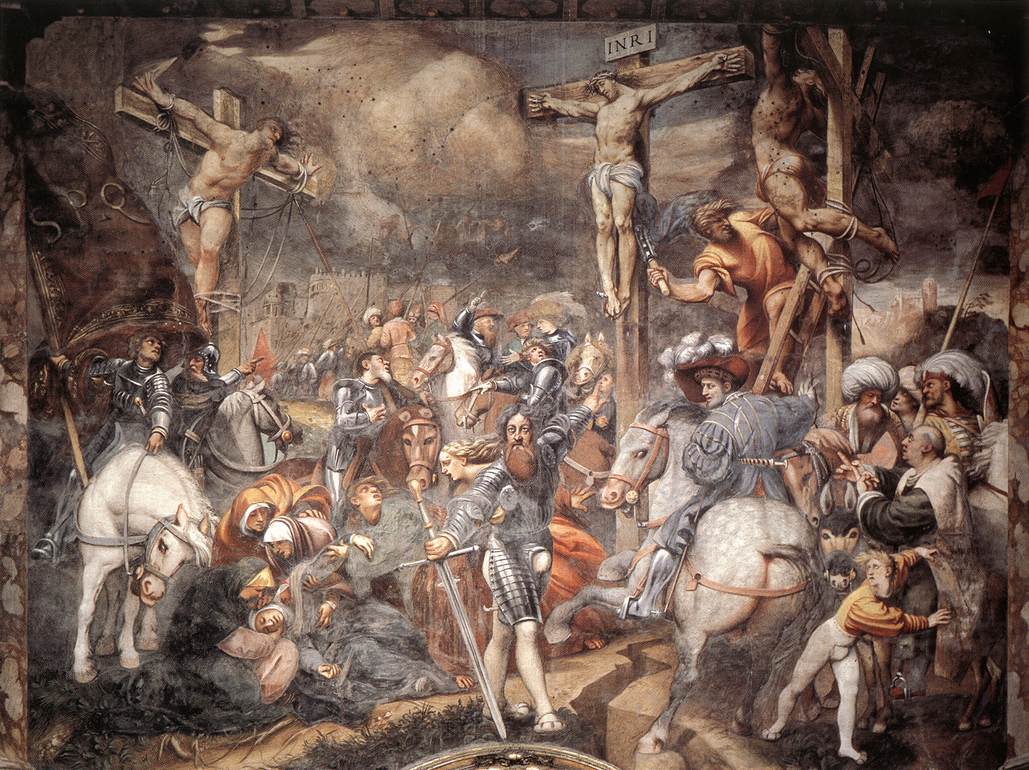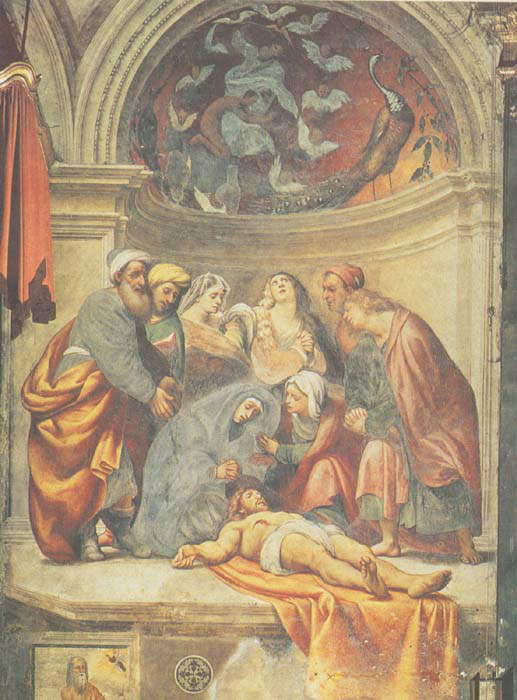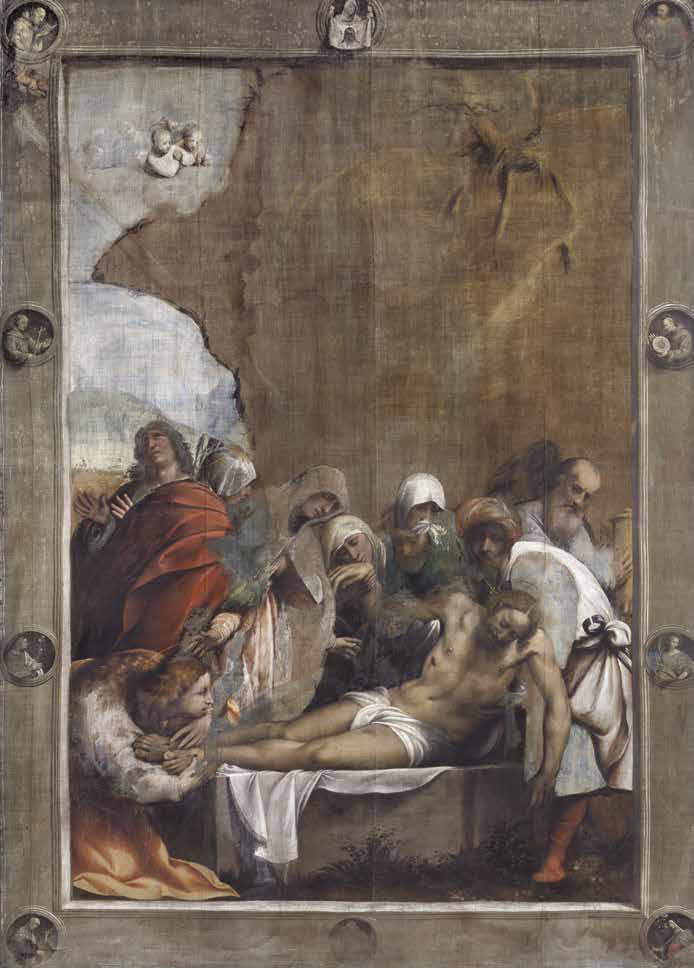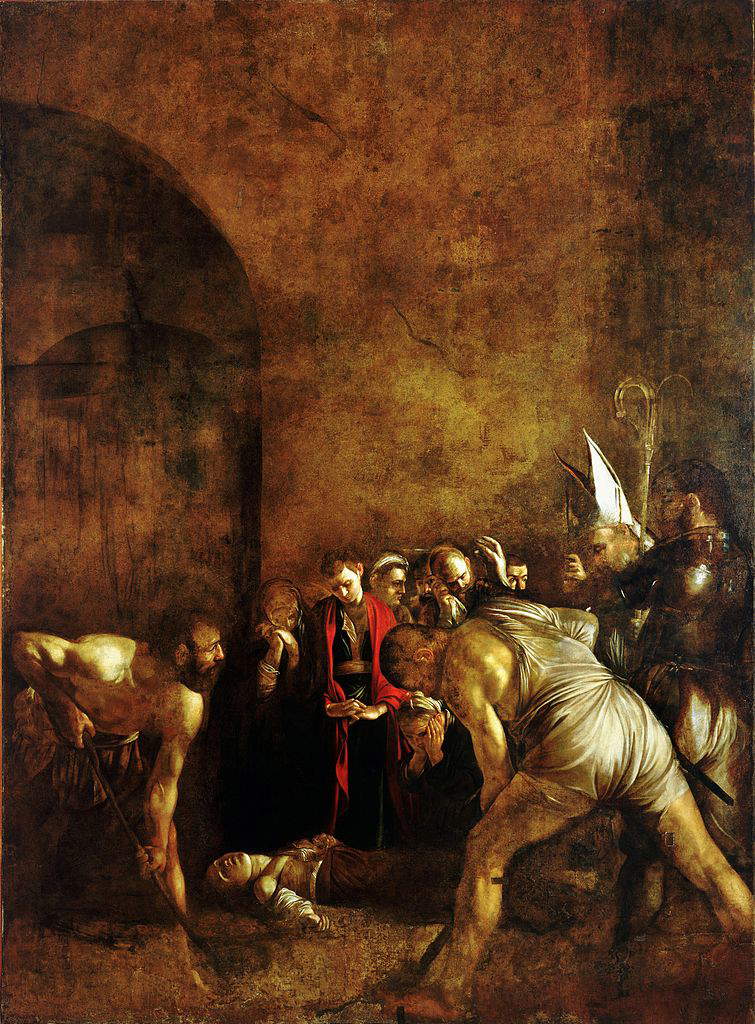by Vittorio Sgarbi , published on 21/11/2019
Categories: Works and artists
/ Disclaimer
Giovanni Antonio de' Sacchis, known as Pordenone, was one of the most revolutionary artists of the sixteenth century: his "storm" is in this article retraced by Vittorio Sgarbi.
This article, previously published in Il Giornale, is reproduced here, enriched in the iconographic apparatus, courtesy of the author Vittorio Sgarbi, curator, together with Caterina Furlan, of the exhibition Il Rinascimento di Pordenone (in Pordenone, Museo Civico d’Arte, until February 2, 2020).
A storm brews in the Po Valley skies upon the arrival of Pordenone (Giovanni Antonio de’ Sacchis; Pordenone, 1484 - Ferrara, 1539), victorious veteran of a match with Titian in the Malchiostro Chapel of Treviso Cathedral. Cadorino is on the ropes, and the insidious Pordenone comes down on him with relentless fury. Leaving him no room, he dominates with frescoes the walls on either side of Titian’s scholastic Annunciation. Titian has instinct, and he has shown that he senses the spirit of the times in The Assumption for the Church of the Frari, but Pordenone has the new experience of the Sistine Chapel, whose noise and fear he internalized, without trauma, that accused Raphael upon seeing it secretly, thanks to Bramante who opened the door of the Sistine Chapel for him in Michelangelo’s absence. A new world was revealed to him, just before Lorenzo Lotto, Sebastiano del Piombo, and Pordenone arrived from the north to visit him, he of gentle disposition. Of Titian we do not know. Of Pordenone’s passage we have evidence in the powerful Alviano fresco, with the Madonna between Saints Sylvester Pope and Jerome, the demure donor, and three furious angel musicians.
The passage to Umbria imposes another fundamental encounter, that with Raphael ’s own airy Foligno altarpiece, in which the wide-ranging freedom of action of the Madonna and Child intersects with a magical landscape that seems to have been painted by Dosso Dossi, the great Ferrara artist and brother of Pordenone. The counterpoint to Raphael’s masterpiece, delivered in 1512, is in the contortion of the child’s movements, which will be a code for Pordenone as early as the imposing Susegana altarpiece (1515-16), with ancient ruins that seem a direct memory of Rome, and then in the Madonna of the Loggia in Udine (1516), whose ample forms consonant with Alviano’s fresco, and, later, though in the archaism of the composition, in the Torre di Pordenone Altarpiece (1520-21). Despite the many perplexities of the critics, these references suggest that the trip to Rome, as well as the Alviano fresco, fall around 1515, perhaps in the immediate excitement of the vision of Raphael’s landmark text for the Po Valley world: theEcstasy of Saint Cecilia in the church of San Giovanni in Monte, which arrived in Bologna, with traumatic effects, in precisely 1515. It is suggested to us by Caterina Furlan, a convert to the precocity of travel, that this was Del Pordenone’s route: “speaking of Alviano, how did one reach this small town at the time, which, as the crow flies, is about eighty kilometers from Rome? For a subject of the Serenissima, the quickest way was to leave from Venice and reach Ancona by sea. From here, taking the via Lauretana, through Loreto, Macerata, Foligno and Spoleto, one arrived at Terni, some forty kilometers away from Alviano.”
 |
| Giovanni Antonio de’ Sacchis called the Pordenone, Adoration of the Magi (1520; fresco; Treviso, Cathedral, Malchiostro Chapel) |
 |
| Tiziano Vecellio, Annunciation (1520; oil on panel, 210 x 176 cm; Treviso, Duomo, Malchiostro Chapel) |
 |
| Titian Vecellio, Assumption (1516-1518; oil on panel, 690 x 360 cm; Venice, Basilica of Santa Maria Gloriosa dei Frari) |
 |
| Raphael, Madonna of Foligno (1511-1512; oil on panel transported to canvas, 320 x 194 cm; Vatican City, Vatican Museums, Pinacoteca Vaticana) |
 |
| Giovanni Antonio de’ Sacchis called the Pordenone, Madonna and Child Enthroned between Saints John the Baptist, Catherine, Daniel and Peter (1515-1516; oil on panel, 284.5 x 178 cm; Susegana, parish church of the Visitation of the Blessed Virgin Mary) |
 |
| Giovanni Antonio de’ Sacchis called the Pordenone, Madonna and Child between Saints Sylvester pope, Jerome, the donor, and musician angels (c. 1515; fresco; Alviano, parish church) |
 |
| Giovanni Antonio de’ Sacchis known as Pordenone, Madonna and Child Enthroned between Saints Hilary of Aquileia, Tatian, Anthony Abbot, and John the Baptist (1520-1521; oil on canvas, 296 x 243 cm; Torre di Pordenone, parish church of Saints Hilary and Tatian) |
Journey certainly for the work and the decorative friezes in Alviano Castle, but for me prolonged all the way to Rome because of the irresistible temptation, in such a strong-willed man, to be at the center of the world. Stopping in Alviano would have been like, for a painter in 1910, going to France and stopping in Fontainebleau, without getting to Paris. Psychologically impossible. On the other hand, that same road had been traveled a few years earlier by a spiritual brother of Pordenone’s, already on the run from Titian, though less extroverted and ready for the challenge that would instead characterize all of Pordenone’s artistic life. I am referring to Lorenzo Lotto, Pordenone’s contemporary and certainly friend, crossed paths in the Marca trevigiana at the height of the altarpiece of Santa Cristina al Tiverone, datable to 1505; and already in 1506 in Recanati for some demanding works; and, before all that, in 1509 called to Rome by Pope Julius II to paint in the Vatican rooms. This useful connection to the experience of another great Venetian brings us back to Treviso, where Pordenone, laden with Roman experience, challenges Titian in the Chapel commissioned by Brocardo Malchiostro, to whom Lorenzo Lotto had painted a most memorable portrait: the young clergyman, secretary to Bishop Bernardo De Rossi, of the painting known as Young Man with the Lampstand in the Kunsthistorisches in Vienna.
All these intersections hint at the close understanding of the greatest and youngest painters of that time, moving in the same spaces: Titian, Lorenzo Lotto, Pordenone, and certainly the more romantic and mysterious Giorgione. But, more than the others, Pordenone brings home to his own city, Pordenone, starting with the Susegana altarpiece, and then in the Madonna of Mercy (1516) for his cathedral, rich in youthful evidence, such as the frescoes with the highly mobile Erasmus and Rochus, and finally in the Madonna of the Loggia in Udine (1516), the Michelangelo impetus and Raphaelesque grace he witnesses in almost real time. Here he is then, against an almost defenseless Titian, in the Malchiostro Chapel, begun in the spring of 1519, with an Adoration of the Magi in which, among the airy volumes of drapery, he inserts an athletic figure from behind, with powerful forms, prescient even of Caravaggio, who, certainly, in his travels between Lombardy, Emilia and Veneto, stopped to think on Pordenone. In the dome with the Padreterno, in a wind of clouds and angels, airs Michelangelo’s Creation of Adam. Its roar leaves Titian’s restrained Annunciation in silence. We are helped, for comparison, by Lanzi’s careful reflection, since, compared to Titian, Pordenone was a great fresco painter, moving in wide spaces with scenographic and theatrical commitment: “he then had his own people who put him before Titian: for... there is no thing that so surprises the multitude, as the great effect, and the magic of chiaroscuro; in which art he preluded Guercino... ”.
 |
| Lorenzo Lotto, Young Man with Oil Lamp (c. 1506; oil on panel, 42.3 x 35.3 cm; Vienna, Kunsthistorisches Museum) |
 |
| Giovanni Antonio de’ Sacchis called the Pordenone, Madonna of Mercy (1515-1516; oil on canvas, 291 x 146 cm; Pordenone, Co-cathedral Cathedral of St. Mark) |
 |
| Giovanni Antonio de’ Sacchis called Pordenone, Madonna of the Loggia (1516; fresco, 153 x 133 cm; Udine, Civici Musei e Gallerie) |
And so, called to Cremona the following year, Pordenone arrives like a tsunami, and upsets the composed narrative on the walls of the nave, conceived between 1506 and 1519, by masters as great as himself, and perhaps less exalted: Boccaccio Boccaccino, Giovanni Francesco Bembo, Altobello Melone, Romanino. Romanino painted Christ before Caiaphas, the Flagellation,Ecce homo, and none had a temperament and passion more akin to Pordenone than Romanino. Nevertheless, the cathedral’s massari in 1520 withdrew his commission for three more arches, and called in Pordenone, entrusting him, on the counter-façade, with the Crucifixion, the Deposition, and the Lamentation, where the painter, fresh from the shock of Treviso, another imprinted on the most tempestuous wall. The most powerful before Mel Gibson’s Passion. To arrive at this impressive theatricality one has to imagine an experience in the Lombard area, on which critics have not particularly dwelt. Indeed, I believe the encounter with another master in whom the Renaissance is amplified to the point of overwhelming measure and space with special effects was decisive: I am referring to Gaudenzio Ferrari in the Chapel of the Crucifixion at Sacro Monte in Varallo. “Gran teatro montano” Giovanni Testori called it, and gran teatro is what, with formidable trompe-l’oeil, Pordenone stages on the counter-façade of Cremona Cathedral. Here he certainly entered, and confronted with such power, Caravaggio, whose influence, in addition to that of the Brescian painters, it will be important to trace back to that of Pordenone and Tintoretto. In Cremona Cathedral he admired, disturbed and dismayed, Pordenone’s irruption into that dimension that Marco Boschini records, better than any other, “eccellente pittor, come savemo, pittor così generoso, e cusì pronto, che ha fato a fresco eccessi de stupori.” “Excesses,” precisely, that we will find again at Cortemaggiore, and at Santa Maria di Campagna in Piacenza, not far from Fontanellato where, shortly before, Parmigianino had practiced.
Today, as well as in the Po Valley itinerary of his fresco cycles, Pordenone can be seen in the masterful altarpieces in Pordenone, in the Gallery of Modern Art: and at least one work, in dialogue with Correggio, Moretto da Brescia, Lorenzo Lotto, Romanino, has the power and terrible truth for which Pordenone was everywhere, in Po Valley and finally in Ferrara where he died, called by Ercole D’Este in 1539: the Deposition for the Church of the Annunciata in Cortemaggiore. Christ is pitifully laid by the mourners in his sarcophagus. The gathered Marys stir as in Nicolò dell’Arca’s Lamentation, while solitary stands, in his grief, Saint John. Magdalene, like a wounded animal, throws herself at Christ’s feet. All takes place under a mountain, of unspeakable power; and here the man of the theater prevails. In fact, Pordenone does not paint her but makes her emerge, with a slight rise of shadow in the outline, from the thick canvas, with the so-called “spared canvas” technique that has energy, brutality. The same, even materially, as a “Burri sack.” No one before Pordenone had dared so much, and only Caravaggio would dare as much in his large canvas with the Sepellimento di santa Lucia for Syracuse. Pordenone measured himself, competed with Titian, but today his greatness is measured only by that of Caravaggio.
 |
| Giovanni Antonio de’ Sacchis known as Pordenone, Crucifixion (1520-1521; fresco, 920 x 1200 cm; Cremona, Cathedral) |
 |
| Giovanni Antonio de’ Sacchis called the Pordenone, Deposition (1520-1521; fresco; Cremona, Duomo) |
 |
| Giovanni Antonio de’ Sacchis known as Pordenone, Deposition of Christ (c. 1524; tempera on canvas, 397 x 291 cm; Cortemaggiore, Church of the Annunziata) |
 |
| Caravaggio, Burial of Saint Lucy (1608; oil on canvas, 408 x 300 cm; Syracuse, church of Santa Lucia alla Badia) |
Warning: the translation into English of the original Italian article was created using automatic tools.
We undertake to review all articles, but we do not guarantee the total absence of inaccuracies in the translation due to the program. You can
find the original by clicking on the ITA button. If you find any mistake,please contact us.
